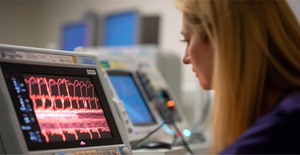Basic Metabolic Panel (BMP)
A basic metabolic panel (BMP) is a test that measures the levels of eight different substances in your blood. It can help your doctor detect signs of serious health problems, such as kidney disease and diabetes. Knowing what a BMP is and how it works can help you determine whether you may need this test based on your symptoms and health status.
Who should get a BMP?
A BMP is usually performed during a routine checkup with your doctor, such as during an annual physical. It is used to help your doctor determine if you are healthy.
According to the National Library of Medicine (NLM), you may need a BMP if you are receiving treatment in an emergency room or if you are being monitored for a chronic condition such as high blood pressure or kidney disease. The University of Rochester Medical Center adds that you may also need a BMP before surgery or as part of a workup for a specific health problem.
Your doctor may suggest getting a BMP if it is suspected that you have an abnormal level of one or more of the substances measured during this test. For example, you may have a BMP if you are experiencing symptoms of diabetes, given how a BMP checks your blood glucose levels. Ask your doctor if you think a BMP test is correct for you. In fact, a BMP is often ordered as a screening blood test for anyone sick enough to be considered for admission to a hospital.
How to get a BMP
Talk to your doctor if you think you need a BMP test. Your doctor may order this test to diagnose a condition or to find out how to best treat a condition. Your doctor may provide you with a referral to an urgent care center, walk-in clinic, or laboratory that offers this service.
What does a BMP test for?
A BMP can reveal important information about your metabolism and chemical balance. The NLM says it may also be used to check your kidney function, blood sugar levels, acid and base levels, and fluid levels.
BMP tests check the levels of eight substances, reports the NLM. These substances are:
- Calcium. This mineral plays an essential role in the functioning of your muscles, nerves, and heart. It also helps your blood clot normally and supports healthy cell function, says the University of Rochester Medical Center.
- Glucose. Also known as blood sugar, glucose is the body’s main source of energy. Imbalances in glucose may indicate the presence of diabetes.
- Creatinine. This substance is a byproduct of the kidneys. Your creatinine levels can reveal information about the way your kidneys are functioning.
- Blood urea nitrogen (BUN). Like creatinine, BUN is another byproduct of the kidneys. It can reveal how well your kidneys are functioning.
- Carbon dioxide. This substance is an electrolyte. Your doctor can check your carbon dioxide levels to see how well your lungs and kidneys are working.
- Potassium. This mineral plays a vital role in your cell health and may be checked to evaluate your cell function.
- Chloride. Your chloride levels can reveal how well your body is managing fluids.
- Sodium. This mineral ensures your blood, cells, and tissues have the correct amount of water needed to work efficiently.
What happens during a BMP test?
A BMP test is performed as a blood test. During this test, a doctor or healthcare professional will use a small needle to draw a small sample of blood from a vein in your arm. Your blood is collected into a vial or test tube. Then, your sample is sent to a lab, where the eight substances are measured .
The NLM says you may feel a slight sting when the needle goes in your arm. In all, drawing the sample for a BMP test usually takes less than five minutes.
You may want to consider wearing a short-sleeved shirt for your lab-draw appointment, as this could make it easier for the testing provider to access and draw blood from your arm. The laboratory can give you other tips on ways to prepare for your test.
What do BMP test results mean?
Results of a BMP test come in milligrams per deciliter (mg/dL), milliequivalents per liter (mEq/L), or millimoles per liter (mmol/L), according to the University of Rochester Medical Center. Your doctor may contact you to discuss your BMP results when available and to help you interpret them.
The University of Rochester Medical Center says that your BMP test results will likely vary based on factors including your age, gender, and health history. It adds that your test results may be different depending on the lab used and that the normal adult range of each measurement used can also vary among labs. The university says that you may not necessarily have a health problem if your numbers are out of the “normal” ranges.
For instance, here are normal results for a BMP, according to Mount Sinai:
- BUN: 6 to 20 mg/dL (2.14 to 7.14 mmol/L)
- Carbon dioxide: 23 to 29 mmol/L
- Creatinine: 0.8 to 1.2 mg/dL (70.72 to 106.08 micromol/L)
- Glucose: 64 to 100 mg/dL (3.55 to 5.55 mmol/L)
- Chloride: 96 to 106 mmol/L
- Potassium: 3.7 to 5.2 mEq/L (3.7 to 5.2 mmol/L)
- Sodium: 136 to 144 mEq/L (136 to 144 mmol/L)
- Calcium: 8.5 to 10.2 mg/dL (2.13 to 2.55 millimol/L)
If any one result or a combination of results reveal any abnormalities, you may need additional testing to confirm or rule out specific diagnoses or conditions, reports the NLM. Abnormal or out-of-range results may be caused by many health conditions, including dehydration, kidney disease, breathing disorders, and diabetes-related complications.
Talk to the doctor or the testing provider if you need help interpreting or understanding the results of your BMP.
Find Basic Metabolic Panel (BMP) near you
- Alabama
- Alaska
- Arizona
- Arkansas
- California
- Colorado
- Connecticut
- Delaware
- Florida
- Georgia
- Hawaii
- Idaho
- Illinois
- Indiana
- Iowa
- Kansas
- Kentucky
- Louisiana
- Maine
- Maryland
- Massachusetts
- Michigan
- Minnesota
- Mississippi
- Missouri
- Montana
- Nebraska
- Nevada
- New Hampshire
- New Jersey
- New Mexico
- New York
- North Carolina
- North Dakota
- Ohio
- Oklahoma
- Oregon
- Pennsylvania
- Rhode Island
- South Carolina
- South Dakota
- Tennessee
- Texas
- Utah
- Vermont
- Virginia
- Washington
- Washington DC
- West Virginia
- Wisconsin
- Wyoming
Basic Metabolic Panel (BMP) FAQs
How should I prepare for my BMP?
Some tests in a BMP may require you to fast before the test, while others may not, says the National Institutes of Health. The NLM adds that if fasting is required, you may need to avoid consuming foods and beverages for eight hours before your test.
What are other names for a BMP?
A BMP may also be referred to as a chemistry panel, chemistry screen, chem 7, or electrolyte panel, reports the NLM. If your doctor has ordered one of these tests, ask to confirm whether it is the same test as a BMP.
What is the difference between a comprehensive metabolic panel (CMP) and a BMP?
A CMP is similar to a BMP but tests for six additional substances. These substances are albumin, bilirubin, total protein, and three different enzymes made by your liver, reports the NLM. In all, a CMP checks the levels of 14 different substances in your blood.
Why would my doctor order a CMP instead of a BMP?
Your doctor may order a CMP instead of a BMP to check for signs of conditions that a BMP cannot detect, such as liver disease, reports the NLM. It adds that your doctor may also order a CMP to get a complete picture of your organ health.
Are there any risks or side effects of getting a BMP?
There is little risk to having a BMP, says the NLM. It adds that you may experience slight pain or bruising at the site where the needle was put in, but that most of these symptoms go away quickly.
When will I get my BMP results?
BMP results may come back anywhere within a few hours to a few weeks after your test, depending on the lab’s turnaround times. Your doctor or the BMP testing provider can give you more accurate information regarding when you can expect your results.
How accurate are BMP results?
Certain prescription and over-the-counter medicines may affect the results of your BMP test, says the University of Rochester Medical Center. It adds that you should provide the BMP testing provider with a list of all the substances you are taking, including herbs, vitamins, and nutritional supplements.
How much does it cost to get a BMP?
The cost of BMP testing is dependent on a variety of factors, such as your geographical location, rates set by the provider, and whether or not the test is covered by your health insurance plan. The BMP testing provider can confirm the cost of this test before your appointment.
Solv has strict sourcing guidelines and relies on peer-reviewed studies, academic research institutions, and medical associations. We avoid using tertiary references.
Everyday Healthcare, Simplified
Expert advice to help you live your best life

 LinkedIn
LinkedIn
